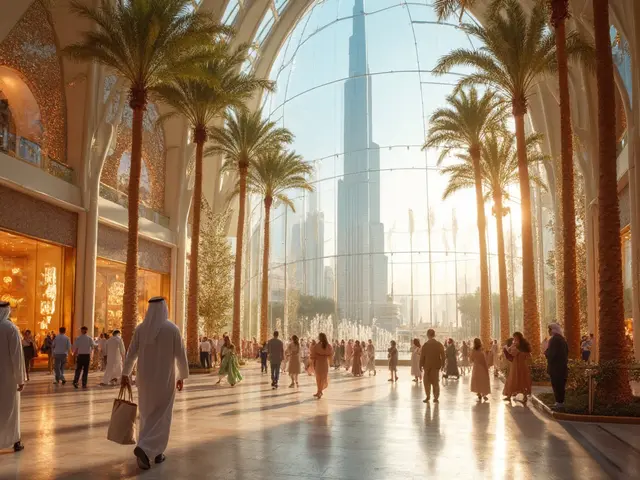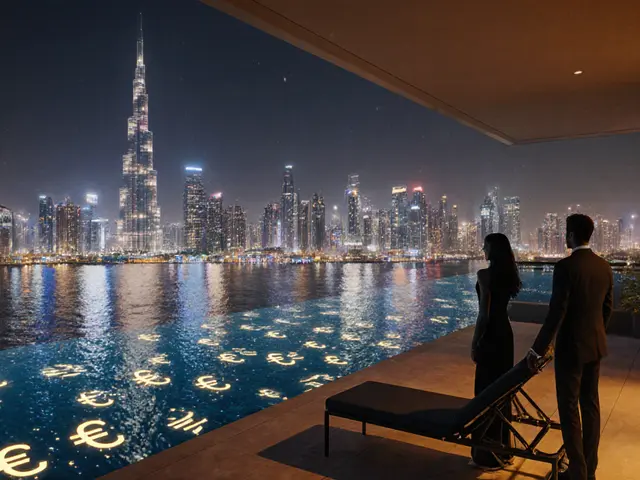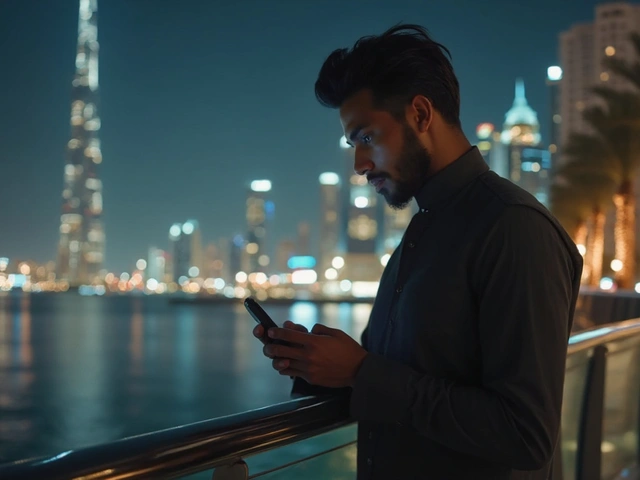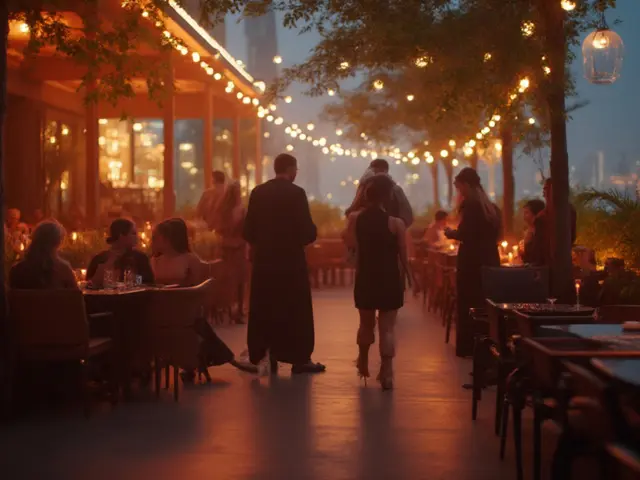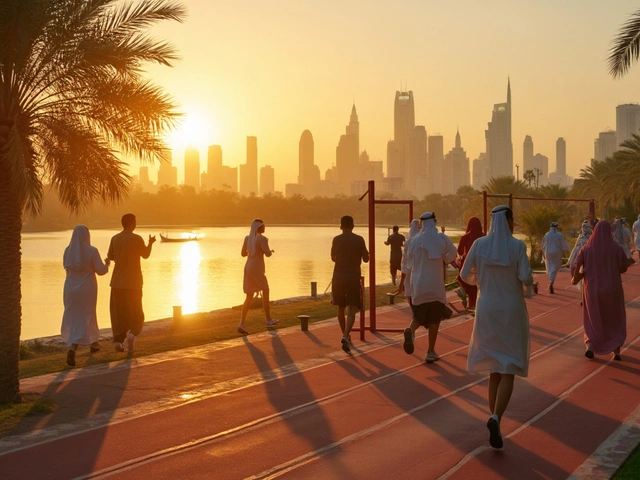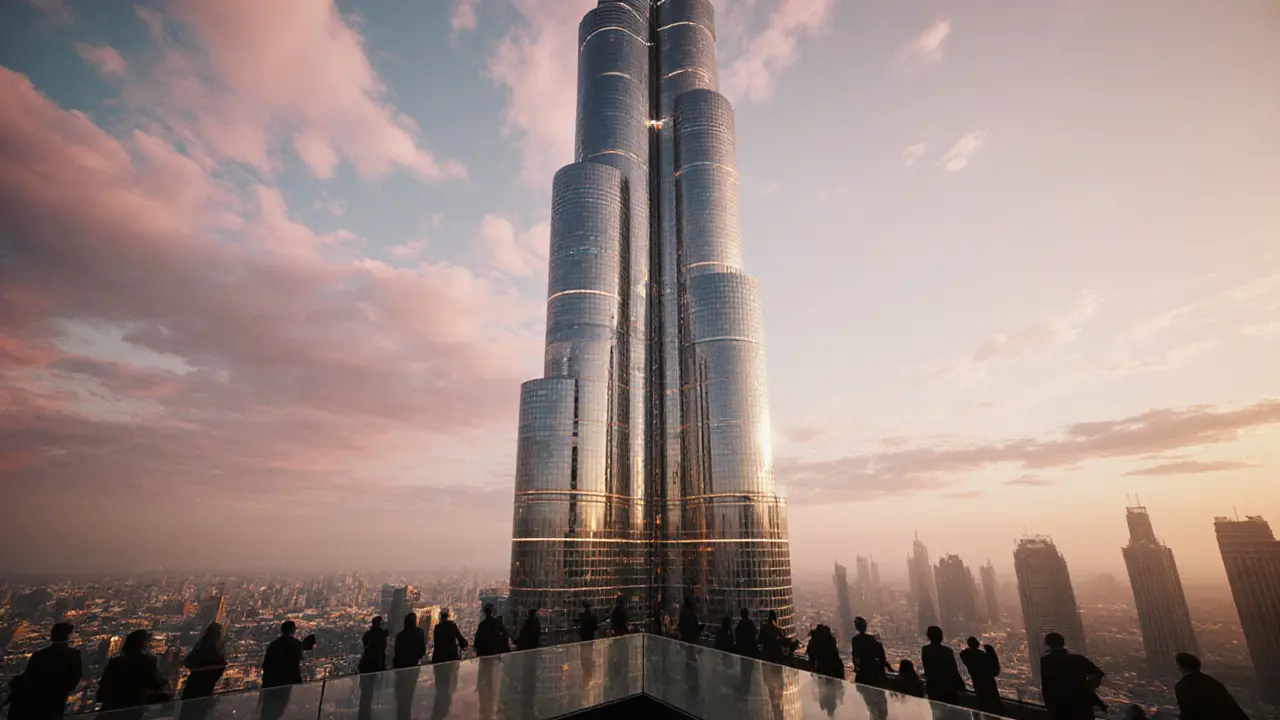
Key Takeaways
- Dubai offers a mix of cutting‑edge skyscrapers and historic neighborhoods perfect for art lovers.
- Alserkal Avenue and Dubai Design District showcase contemporary galleries and creative studios.
- Iconic sites like Burj Khalifa, Dubai Frame and the Museum of the Future blend architecture with immersive art.
- Heritage areas such as AlFahidi and Jumeirah Mosque let you step back into the emirate’s roots.
- A suggested two‑day itinerary helps you hit the highlights without feeling rushed.
When you think of Dubai attractions, glittering towers often steal the spotlight. But the city’s art scene and architectural experiments are equally breathtaking. From towering skyscrapers that double as kinetic art installations to restored courtyard houses that whisper stories of the pearl‑diving era, Dubai is a playground for anyone who craves visual wow‑factor. This guide walks you through the most stunning places where art meets architecture, so you can plan a day‑by‑day adventure that feels fresh and unforgettable.
Dubai is a global city on the Arabian Gulf known for its rapid skyline growth, luxury tourism, and a burgeoning creative sector. Over the past decade the emirate has invested heavily in cultural infrastructure, turning once‑desert stretches into vibrant hubs of design, performance, and heritage preservation.
1. Skyline Masterpieces that Double as Art Installations
Dubai’s skyline reads like a portfolio of architectural experiments. Two towers stand out for their blend of structural daring and artistic expression.
Burj Khalifa is a super‑tall skyscraper that reaches 828m, making it the world’s tallest building. Its sleek, tapering silhouette is illuminated nightly with choreographed light shows that turn the tower into a moving canvas. Inside, the observation deck showcases a curated exhibit called “Vertigo,” where local artists reinterpret the city’s verticality through sculpture and digital media.
Dubai Frame is a colossal picture frame that offers panoramic views of both old and new Dubai. Designed by architect Fernando Donis, the structure’s glass‑filled façade streams ambient light, creating a constantly shifting visual experience that mirrors the city’s evolution. The ground‑level museum inside the Frame features large‑scale photographs juxtaposing historic alleyways with modern skyscrapers, turning architecture itself into a storytelling medium.
2. Creative Districts - Where Galleries, Studios, and Street Art Converge
Dubai’s artistic pulse beats strongest in two purpose‑built neighborhoods that bring together galleries, design studios, and street‑level murals.
Alserkal Avenue is an industrial‑turned‑cultural complex in Al Quoz. It houses over 60 galleries, performance spaces, and pop‑up shops. The Avenue’s three‑storey warehouse walls are a living canvas for street artists, with ever‑changing murals that reflect contemporary social themes. Regular events like “Art Dubai Week” turn the area into a bustling marketplace of ideas, making it a must‑visit for anyone who wants to see the city’s creative edge.
Dubai Design District (d3) is a purpose‑built hub for fashion, interior design, and visual arts. The district’s architecture-clean lines, open courtyards, and reflective pools-acts as a backdrop for large‑scale installations by emerging regional designers. Check out the weekly “Open Studio” nights where designers showcase prototype pieces, turning the district itself into an ever‑evolving exhibit.
3. Museums that Fuse Futurism with Artful Storytelling
Dubai’s museum scene goes beyond static displays; it integrates interactive technology, immersive environments, and striking architecture.
Museum of the Future is a torus‑shaped building whose façade is covered in Arabic calligraphy that lights up at night. Inside, each exhibition combines speculative design, art installations, and hands‑on labs, inviting visitors to envision what Dubai-and humanity-might look like in 2050. Highlights include the “Future of Mobility” sculpture garden, where kinetic art pieces react to visitor movement.
Etihad Museum is housed in a modern, low‑rise structure that uses geometric panels to echo the UAE’s flag. The museum’s galleries weave narrative art-murals, digital timelines, and interactive sand tables-to tell the story of the nation’s formation in 1971. It’s an excellent stop for travelers who want context for the country’s rapid development.
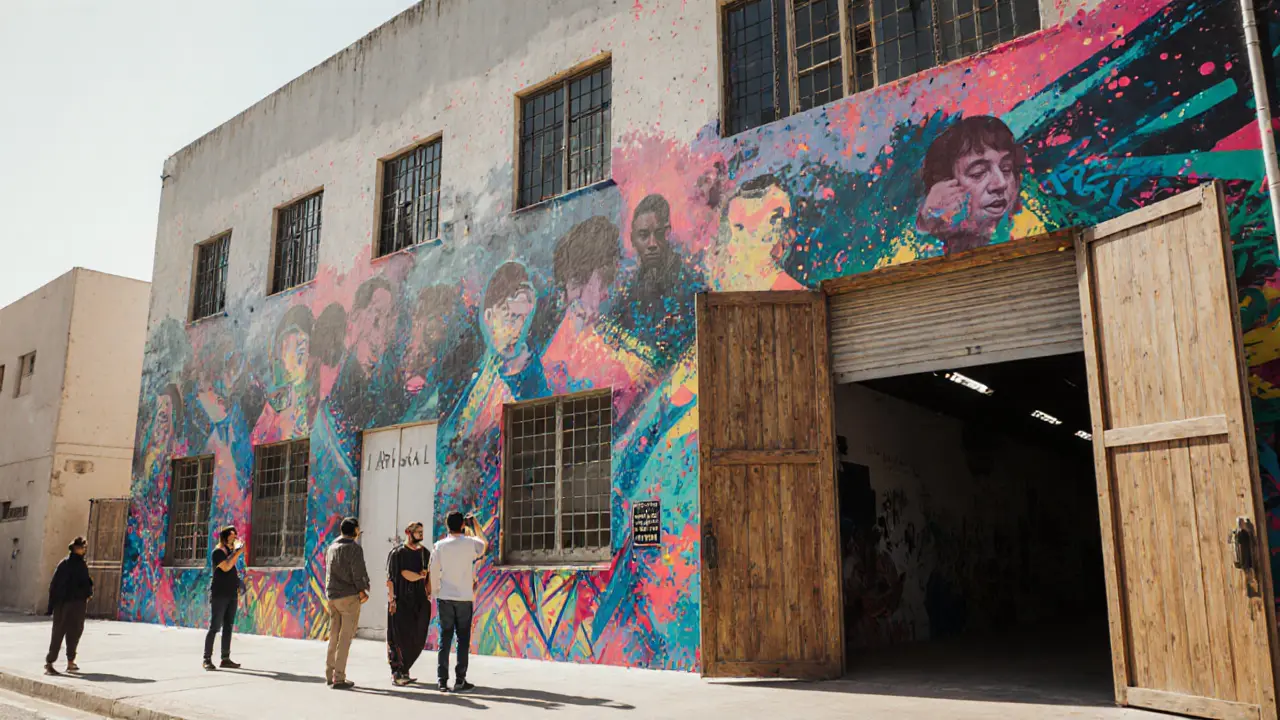
4. Preserving Heritage - From Wind‑towered Houses to Majestic Mosques
Beyond the glitter, Dubai safeguards centuries‑old architecture that provides a tactile link to the past.
AlFahidi Historical Neighborhood (AlBastakiya) is a restored quarter of narrow lanes, wind‑towers (Barajeel), and sandstone houses dating back to the 19thcentury pearl‑diving era. Walking tours often include visits to the Sheikh Mohammed Centre for Cultural Understanding, where visitors can enjoy traditional Emirati art displays in a heritage house setting.
Jumeirah Mosque is one of the few mosques in Dubai open to non‑Muslim visitors. Its pristine white marble and intricate stonework make it an architectural gem, while the guided “Open Doors” tours incorporate calligraphy art lessons, letting guests try their hand at Arabic script.
5. Man‑Made Islands - Large‑Scale Urban Art
Dubai’s ambition extends to shaping the sea itself.
Palm Jumeirah is an artificial palm‑shaped archipelago that hosts luxury resorts and private residences. From an aerial view, the island’s layout reads like a massive land‑based sculpture, and the shoreline promenades feature wave‑inspired lighting installations that turn night walks into a gallery stroll. The Pointe at Palm Jumeirah also showcases rotating public art pieces by Middle Eastern artists, blending beachfront leisure with contemporary art.
6. Two‑Day Itinerary to Capture the Best of Art & Architecture
Here’s a practical route that lets you soak in the highlights without feeling rushed.
- Morning Day1 - Skyline & Museum: Start at Burj Khalifa’s observation deck for sunrise views, then walk to Dubai Mall’s ArtbytheLake installation. Grab a quick coffee, then head to the Museum of the Future for a 3‑hour deep dive.
- Midday Day1 - Heritage Lunch: Take a short taxi to AlFahidi. Enjoy a traditional Emirati meal at the Arabian Tea House, then wander the restored lanes.
- Afternoon Day1 - Creative Districts: Visit Alserkal Avenue. Pick any two galleries that interest you (e.g., Leila Heller Gallery, Gallery Isabelle Van den Eynde). End with a street‑art photo session.
- Evening Day1 - Dubai Frame: Arrive just before sunset to see the city transition from day to night. The museum inside offers a concise visual timeline.
- Morning Day2 - Palm & Mosque: Catch a water‑taxi to Palm Jumeirah. Stroll the boardwalk, snap the iconic palm‑shape from the sea, then head to Jumeirah Mosque for its “Open Doors” tour.
- Afternoon Day2 - d3 & Etihad Museum: Explore Dubai Design District’s open studios, then finish at Etihad Museum for historical context.
Adjust the schedule based on your pace, but this plan hits the core mix of ultra‑modern, contemporary, and historic sites.
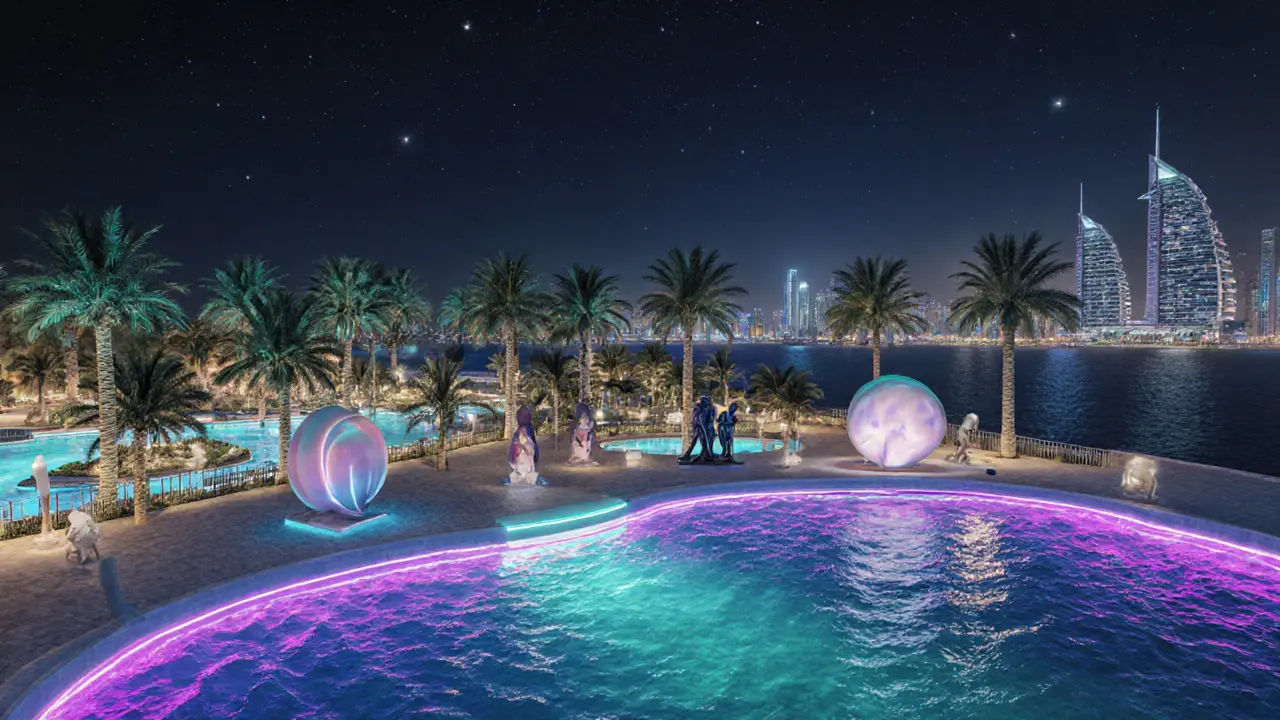
7. Quick Checklist - Don’t Forget These Essentials
- Comfortable walking shoes (some heritage lanes are cobblestoned).
- Modest dress for mosque visits (long sleeves, knees covered).
- Sun protection - rooftop terraces can be intense at midday.
- Reusable water bottle - many museums have refill stations.
- Transport app (Careem or Dubai Taxi) for quick hops between districts.
8. Comparison of Top Art & Architecture Spots
| Attraction | Type | Year Opened | Location | Must‑See Feature |
|---|---|---|---|---|
| Burj Khalifa | Skyscraper/Art Installation | 2010 | Downtown Dubai | Nightlight choreographed shows |
| Dubai Frame | d>Observation/Architecture | 2018 | Zabeel Park | Panoramic old‑vs‑new view |
| Alserkal Avenue | Creative District | 2007 | Al Quoz | Rotating street‑art murals |
| Dubai Design District (d3) | Design Hub | 2015 | Business Bay | Open‑studio nights |
| Museum of the Future | Museum/Art | 2022 | Sheikh Zayed Road | Futuristic torus façade |
| AlFahidi Historical Neighborhood | Heritage | 2015 (restoration) | Al Bastakiya | Wind‑tower houses |
| Jumeirah Mosque | Religious Architecture | 1979 | Jumeirah | Open‑doors calligraphy lesson |
| Palm Jumeirah | Man‑made Island | 2006 | Coast of Dubai | Nighttime wave lighting |
Frequently Asked Questions
Do I need a visa to visit these attractions?
Most nationalities can obtain a 30‑day visa on arrival, which covers entry to all public attractions. Check the latest UAE immigration guidelines before you travel.
Are the museums and galleries wheelchair accessible?
Yes. All major sites-Museum of the Future, Etihad Museum, Dubai Frame, and most galleries in Alserkal Avenue-provide ramps, elevators, and accessible restrooms.
What’s the best time of day for photography?
Early morning offers soft light for heritage streets, while golden hour (around sunset) highlights the glass façades of Burj Khalifa and Dubai Frame. Nighttime is perfect for capturing the light shows.
Can I visit the Jumeirah Mosque if I’m not Muslim?
Absolutely. The mosque runs daily “Open Doors” tours at 10am and 2pm, and visitors are welcome to join the brief introductory talk and calligraphy activity.
Is public transport convenient for reaching Alserkal Avenue?
The Metro Red Line stops at Al Quoz Sidiq, and a short 10‑minute walk leads to the Avenue. Taxis and ride‑hailing services are also abundant and inexpensive.
